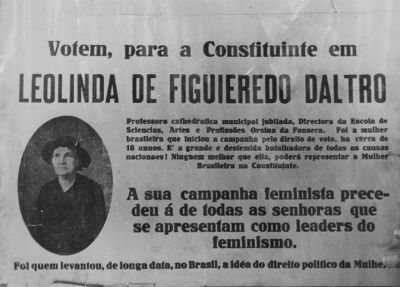“PoliticsofCoffeewithMilk” is an expression used to characterize a political procedure typical of a period of Brazilian history called oligarchic republic(1898 to 1930). This procedure consisted of alternating the position of President of the Republic between the oligarchies of the two most powerful states of the time, the state of They arePaul and the state of Minesgeneral. In order to understand how this procedure was feasible, it is necessary that we know the effect that Brazil's option for systemfederative At that time.
Federative system and decentralization of power
With the Proclamation of the Republic, on November 15, 1889, the political organization of Brazil structurally changed. During the Time courseImperial, politics was centralized in the Emperor's office, and the country was administered regionally by the presidents of the provinces. Central power was exercised by the figure of the emperor himself through the Moderating Power.
The republican regime, inspired by the model of the United States and, in part, by the positivist model of Auguste Comte, decentralized power. The former provinces became
states of the federation, with autonomy for political, economic and military decisions – all this guaranteed by the first maximum law of our First Republic, the Constitution of 1891. As Boris Fausto points out in his history of Brazil:The key to the autonomy of the states – the designation given to the former provinces – was found in article 65, §2 of the Constitution. There, it was said that the States had powers and rights that were not denied them by provisions of the constitutional text. In this way, the States were implicitly authorized to exercise different attributions, such as those of borrow abroad and organize its own military forces: the state public forces. Such attributions were of interest to the large states and, above all, to São Paulo. [1]
However, instead of having given way to the full functioning of the Federative Republic, the autonomy of the states led to the overlapping of some states (the most economically powerful) on their own power federal.
Governors Policy and Coffee with Milk Policy
The two states that benefited most from the federal system were They arePaul and Minesgeneral (behind them were Bahia, RiverGreatofSouth and Pernambuco). The economic characteristics of these two states, that is, the production of coffee, in São Paulo, and the one of milk, in Minas, served as the motto for the designation of “Coffee with Milk Policy”. This is because the office of president of the Republic was now occupied, in most cases, by some representative of the oligarchs of one of these two states.
Do not stop now... There's more after the advertising ;)
It was up to the president to organize the entire state machine in terms of managing the interests of these oligarchs and whoever else orbited around them.
This scheme came into effect during the Campos Sales government, from 1898, and became known as “Governors Policy”. This policy formed the basis of the Coffee with Milk Policy. Boris Fausto says that the main objective of the “politics of the governors” was:
[…] reduce as much as possible the political disputes within each State, favoring the strongest groups; reach a basic agreement between the Union and the States; to put an end to the existing hostilities between the Executive and the Legislative, taming the choice of deputies. The central government would thus support the dominant groups in the States, while these, in turn, would support the policy of the President of the Republic. In order to adjust the Chamber of Deputies to these ends, a small but important modification was made to its bylaws. Although a little complicated, it is worth knowing, among other things, for being a living example of how popular representation was manipulated. [2]
Because the two states that became preponderant in this phase of the Republic were São Paulo and Minas General, the two parties that made the main political and electoral articulations were the Republican Party Paulista (PRP) and the Republican Party of Minas Gerais(PRM).
GRADES
[1] FAUSTO, Boris. history of Brazil. São Paulo: EDUSP, 2013. P. 214-15.
[2]ibid. P. 222-23
By Me. Cláudio Fernandes
Would you like to reference this text in a school or academic work? Look:
FERNANDES, Claudio. "Coffee with Milk Policy"; Brazil School. Available in: https://brasilescola.uol.com.br/historiab/politica-cafe-com-leite.htm. Accessed on June 27, 2021.

